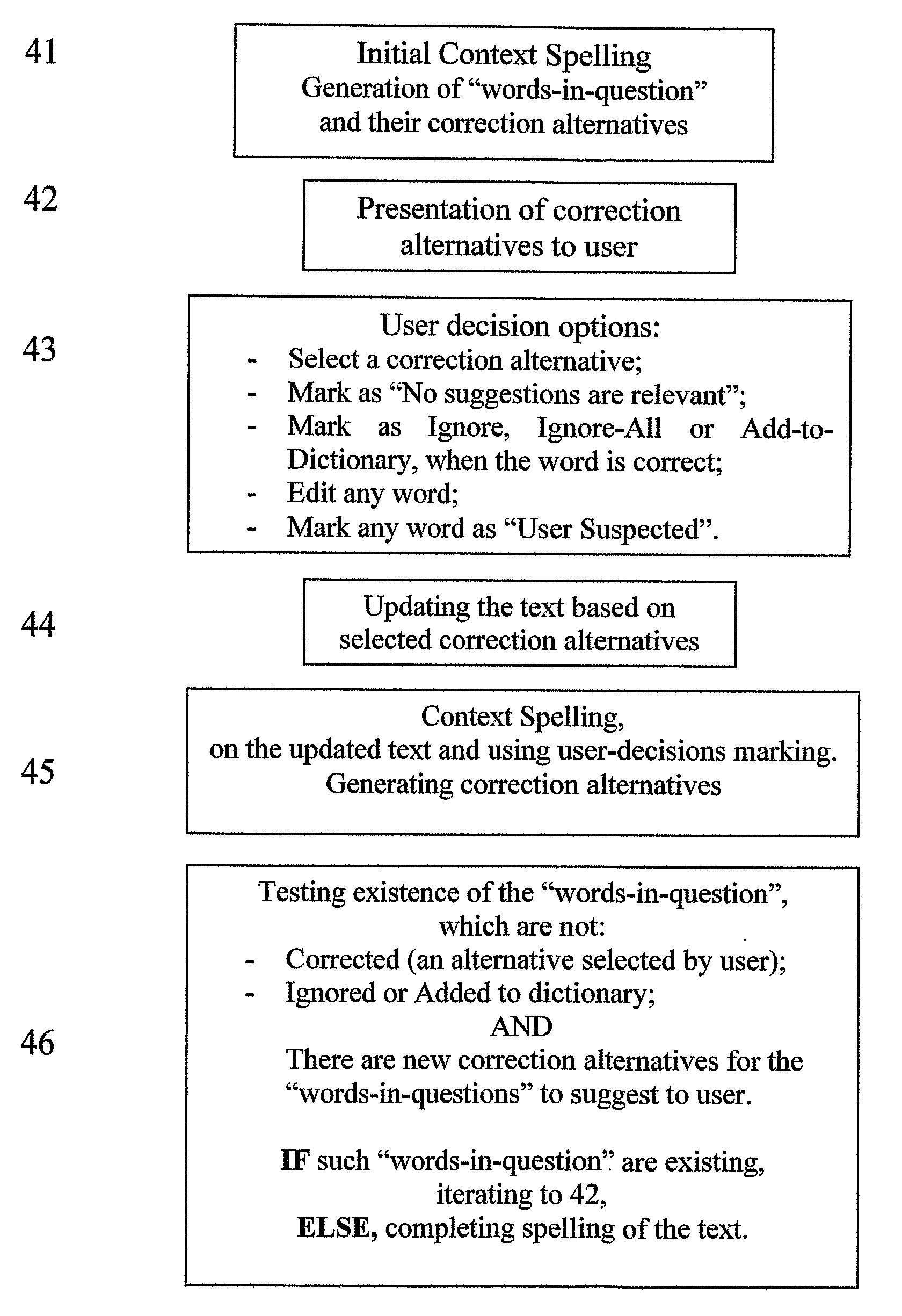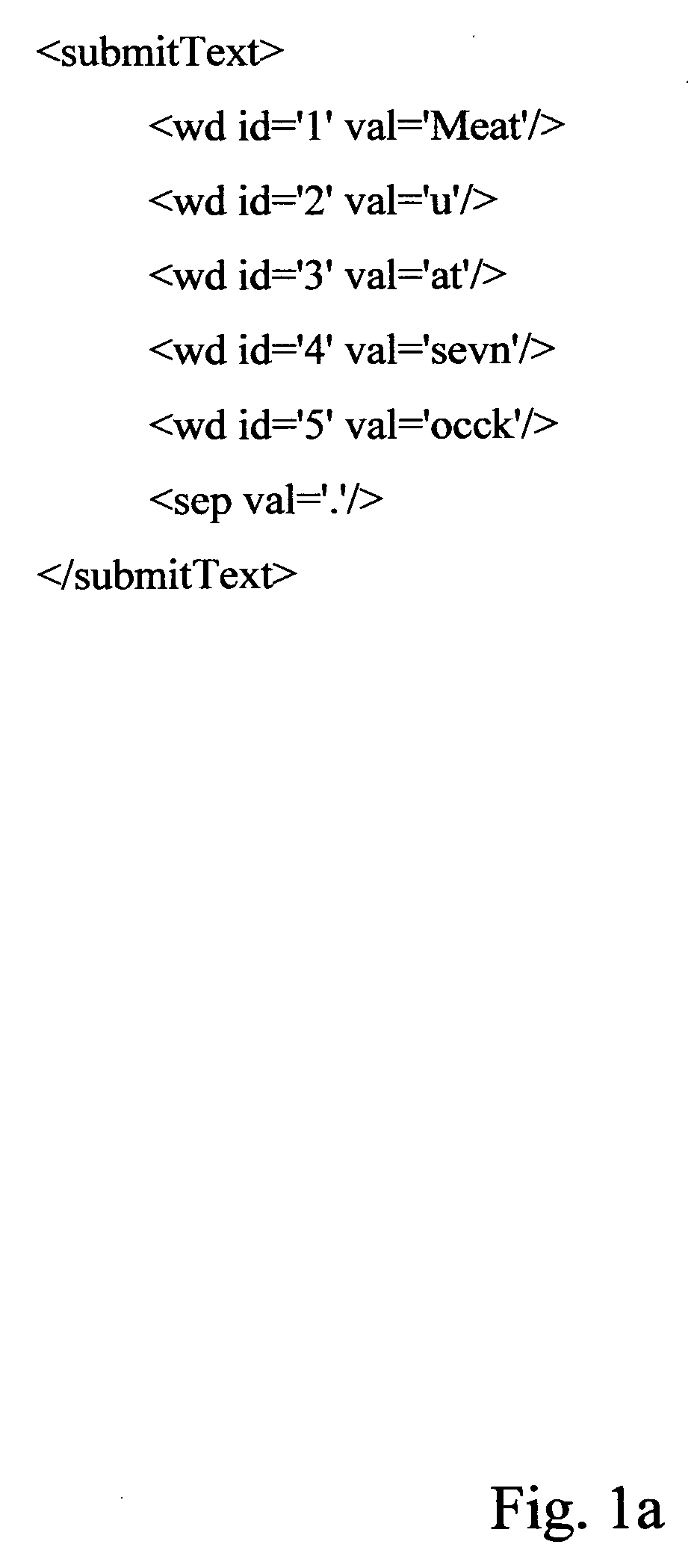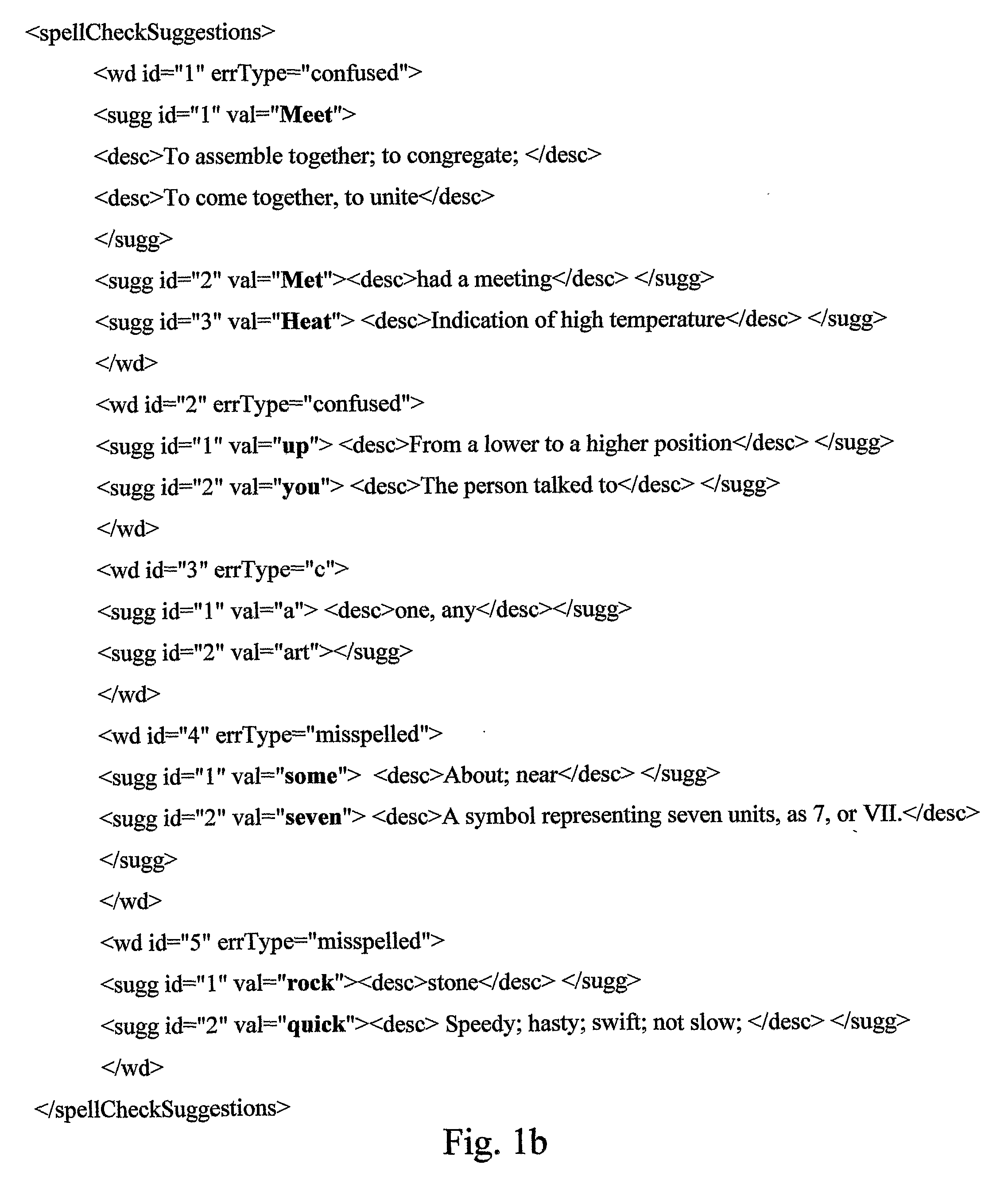Method and system for user-interactive iterative spell checking
a technology of user-interactive and iterative spell checking, applied in the field of text and word processing assistance, can solve the problems of not being able to correct or propose the right correction, not being able to distinguish any word in the dictionary, and often making writing mistakes, so as to improve the context-spelling results
- Summary
- Abstract
- Description
- Claims
- Application Information
AI Technical Summary
Benefits of technology
Problems solved by technology
Method used
Image
Examples
Embodiment Construction
[0101]The following abbreviations are used in samples of XML code at FIG. 1 and FIG. 2.
wd—word;
wid—word id;
ign—ignore;
sel—selected alternative;
sid—selected alternative id;
sugg—suggested alternative;
desc—description or usage example phrase
sep—separator like dot, comma, etc
FIG. 1 is a correction example for the phrase: “Meat u at sevn occk.”, where the following is shown at:
[0102]a) the first iteration XML encoding of the phrase passed to the context spelling method;
[0103]b) the first iteration XML code with the detected words-in-question with the proposed by the context spelling method correction alternatives and their descriptions;
[0104]c) the first iteration XML code with user's decisions made;
[0105]d) the second iteration XML code with the detected words-in-question with the proposed by the context spelling method correction alternatives and their descriptions;
[0106]e) the second iteration XML code with user's decisions made;
[0107]f) the end of iterations XML code notification;
FIG...
PUM
 Login to View More
Login to View More Abstract
Description
Claims
Application Information
 Login to View More
Login to View More - R&D
- Intellectual Property
- Life Sciences
- Materials
- Tech Scout
- Unparalleled Data Quality
- Higher Quality Content
- 60% Fewer Hallucinations
Browse by: Latest US Patents, China's latest patents, Technical Efficacy Thesaurus, Application Domain, Technology Topic, Popular Technical Reports.
© 2025 PatSnap. All rights reserved.Legal|Privacy policy|Modern Slavery Act Transparency Statement|Sitemap|About US| Contact US: help@patsnap.com



